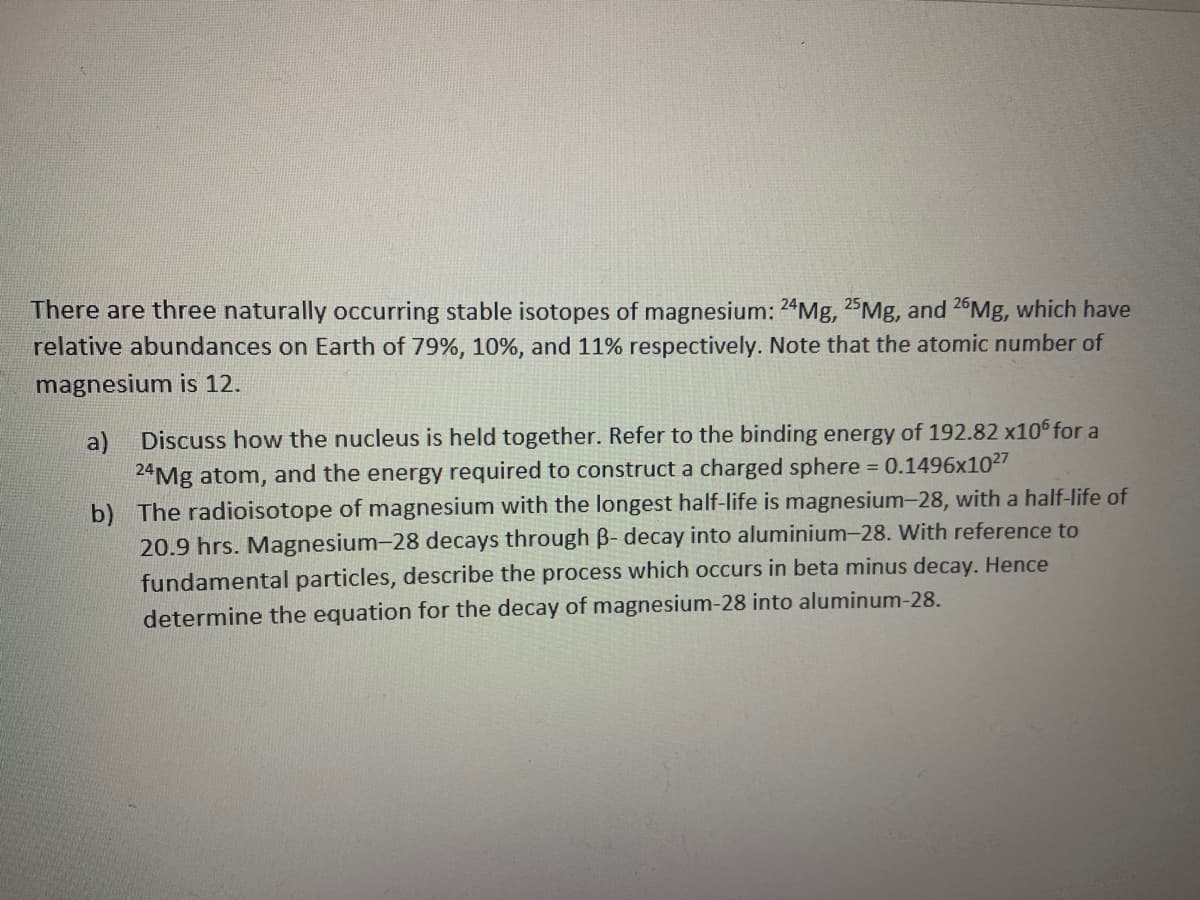There are three naturally occurring stable isotopes of magnesium: 24Mg, 25Mg, and 26Mg, which have relative abundances on Earth of 79%, 10 %, and 11% respectively. Note that the atomic number of magnesium is 12. a) Discuss how the nucleus is held together. Refer to the binding energy of 192.82 x106 for a 24 Mg atom, and the energy required to construct a charged sphere = 0.1496x1027
There are three naturally occurring stable isotopes of magnesium: 24Mg, 25Mg, and 26Mg, which have relative abundances on Earth of 79%, 10 %, and 11% respectively. Note that the atomic number of magnesium is 12. a) Discuss how the nucleus is held together. Refer to the binding energy of 192.82 x106 for a 24 Mg atom, and the energy required to construct a charged sphere = 0.1496x1027
Related questions
Question

Transcribed Image Text:There are three naturally occurring stable isotopes of magnesium: 24MB, 25MB, and 2°MB, which have
relative abundances on Earth of 79%, 10%, and 11% respectively. Note that the atomic number of
magnesium is 12.
a)
Discuss how the nucleus is held together. Refer to the binding energy of 192.82 x106 for a
2*Mg atom, and the energy required to construct a charged sphere = 0.1496x1027
b) The radioisotope of magnesium with the longest half-life is magnesium-28, with a half-life of
20.9 hrs. Magnesium-28 decays through B- decay into aluminium-28. With reference to
fundamental particles, describe the process which occurs in beta minus decay. Hence
determine the equation for the decay of magnesium-28 into aluminum-28.
Expert Solution
This question has been solved!
Explore an expertly crafted, step-by-step solution for a thorough understanding of key concepts.
Step by step
Solved in 2 steps
